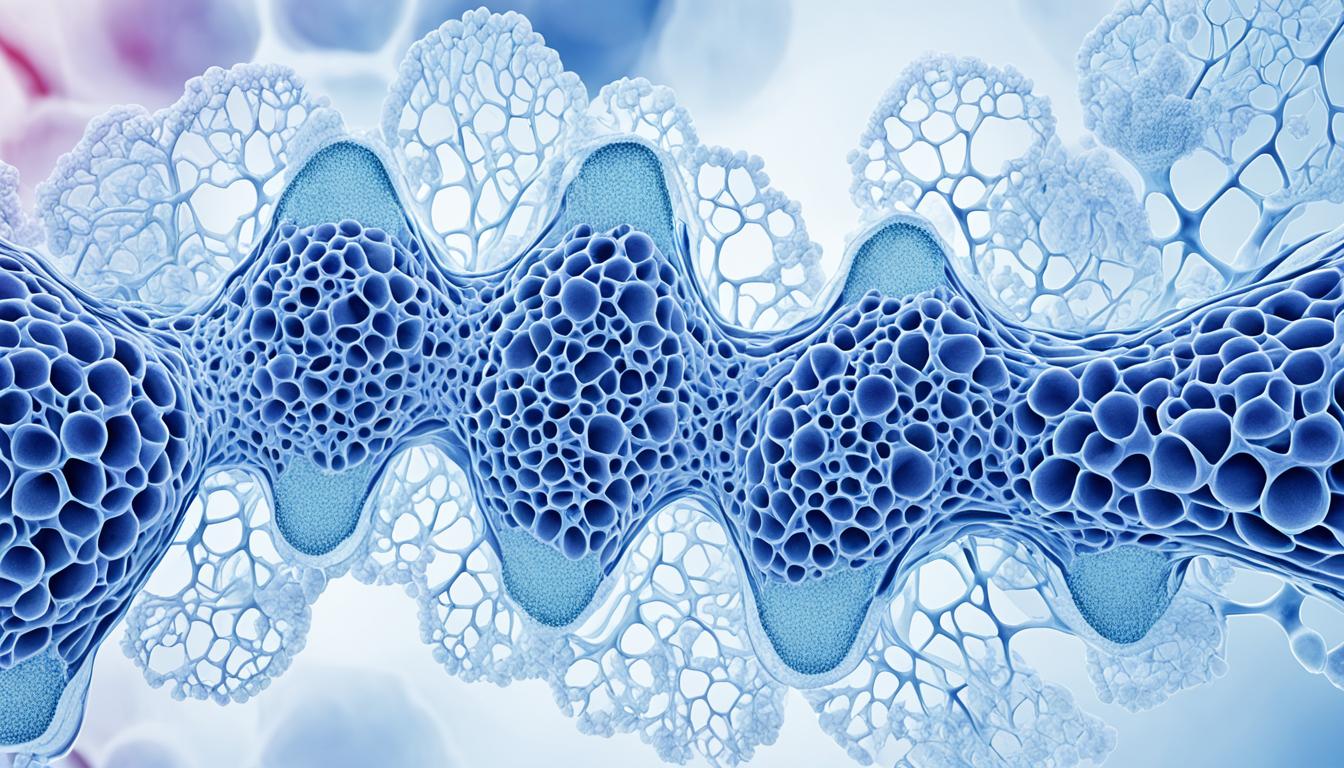Heel pain is often felt by many people. It’s usually caused by plantar fasciitis or Achilles tendonitis. Plantar fasciitis is when the band of tissue at the bottom of your foot gets irritated. Achilles tendonitis is an issue with the big tendon at the back of your ankle.
You might feel sharp pain in your heel due to these conditions. This pain can get worse when you’re active and better when you rest. It makes doing daily tasks hard.
Heel pain can come from lots of different things. Doing too much, standing for a long time, or wearing the wrong shoes can be factors. Flat feet or high arches, being overweight, and even obesity can increase your risk.
Preventing heel pain involves a few steps. Choose shoes that help your feet and are comfortable. Stay off hard surfaces, stretch often, and keep your weight under control. These actions lower the chance of dealing with heel pain.
If you suspect heel pain, see a specialist. They will check you and might ask for pictures of your foot. These images can show the main issue causing your pain.
Treatment for heel pain changes based on how bad it is. For mild cases, steps like RICE, shots, and physical therapy might be enough. Your doctor could also suggest changing how you walk or the kind of shoes you wear. This is to help your feet get better and stronger.
If the pain doesn’t go away easily, your doctor might think about surgery. A new method, Stem Cell Therapy, is also available. This treatment uses cells from your own body to improve healing. This way, it lessens pain and aids in becoming fully well again.
Key Takeaways:
- Heel pain can result from problems like plantar fasciitis or Achilles tendonitis.
- Choosing the right shoes, staying off hard surfaces, and stretching can stop heel pain.
- A doctor specializing in foot and ankle conditions can figure out the cause of your heel pain.
- There are many ways to treat heel pain, from simple methods to surgery.
- Stem Cell Therapy is a pain-relieving and regenerative option that doesn’t require an operation.
Innovative Stem Cell Therapy for Heel Pain Relief
Living Room Health Regenerative Treatments provide cutting-edge options for heel pain. This includes Stem Cell Therapy, MFAT, and PRP treatments. These are all minimally invasive.
Stem Cell Therapy uses your body’s own stem cells. These cells help heal and regenerate. This therapy has helped many find relief by fixing damaged tissues and decreasing swelling. It’s a great option for those with long-term heel pain.
MFAT Injections use your own fat cells. These cells have healing abilities, working to repair and refresh tissues. Used alongside Stem Cell Therapy, they tackle heel pain comprehensively.
There’s also PRP treatment at Living Room Health. This method involves injecting platelets from your blood into the sore spot. It boosts healing and cuts down on pain and swelling. It’s a non-surgical, natural approach that can ease heel pain quickly.
These treatments don’t just ease the ache. They help your body heal and move better. They’re simple, don’t need surgery, and you recover fast. With Stem Cell Therapy, you can go back to regular activities within a day. It changes how we treat heel pain, making life better for many.
Success Stories
Many have improved their lives with Stem Cell Therapy at Living Room Health. Let’s share some stories:
- John, a 45-year-old who loved running, had heel pain for years. Stem Cell Therapy not only eased his pain but also made his heel more flexible. Running is enjoyable again for him.
- Sarah, in healthcare, faced plantar fasciitis that made work tough. Standard treatments didn’t help much. After Stem Cell Therapy, her pain faded. Work is now pain-free for her.
- Robert couldn’t walk far due to heel pain from Achilles tendonitis. Stem Cell Therapy changed that. He now walks with his spouse daily, pain-free.
| Treatment | Benefits |
|---|---|
| Stem Cell Therapy | – Uses your body’s own cells for healing – Jump starts natural regeneration – Long-term pain relief – Aids in reducing inflammation |
| Micro-fragmented Adipose Tissue (MFAT) Injections | – Uses your own adipose cells for healing – Targets and reduces pain and inflammation – Helps repair and refresh tissues |
| Platelet Rich Plasma (PRP) treatment | – Puts concentrated platelets into the sore area – Speeds up healing, reduces pain and swelling – A safe, natural choice |
Are you held back by heel pain? Living Room Health Regenerative Treatments can help. Reach out to us for a consultation. Discover how Stem Cell Therapy and more can break your pain cycle and boost movement.
Surgical and Non-Surgical Options for Ankle and Foot Pain
Heel pain can be caused by many things like plantar fasciitis, Achilles tendinopathy, and bursitis. It can also come from arthritis, a heel fracture, or tarsal tunnel syndrome. These issues can really affect your daily life. It’s key to look at both surgery and non-surgery options to beat the pain.
Doctors often use things like physical therapy, stretches, special shoe inserts, and medicine to fight heel pain. But, if those don’t work, or your pain is really bad, surgery might be the answer. Arthroscopic surgery is a common choice. It uses small cuts and helps you heal faster. This way, you can get back to your normal life quickly.
If you would rather not have surgery, there’s another choice. Stem Cell Therapy is a natural way to help your body heal. It uses your body’s own power to repair itself. Dr. Todd Peters knows a lot about helping with foot and ankle pain. He can give you the right care, whether it’s surgery or not, that fits your needs.

